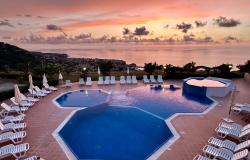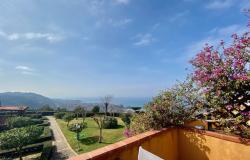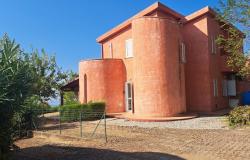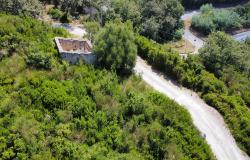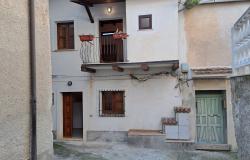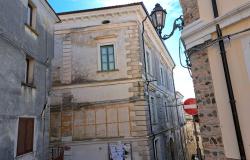Under a pale silver moon, the sea is a glossy sheet of molten obsidian. But flickering in the distance, the lights of Sicily dance on the crest of tiny breeze-stirred wavelets.
I had come to Scilla, the lone finger of Calabria that stretches out towards the Sicilian village of Torre di Faro like a yearning lover, expecting to find echoes of Homer’s monster, a terrifying mermaid with six long necks, six baying dog heads and sharp, bloodthirsty teeth “full of murky death.”
But there are none. No crashing waves, no raging foam, no shadowy caverns—only calm waters lapping the beach or breaking gently against smooth rocks under the forbidding bulk of the Castello Ruffo, once one of the most important castles in the Kingdom of Naples. Even the “sharp peak jutting up all the way to wide heaven,” upon which the castle stands, is more rugged than fearsome. And, on a starry night, there certainly is no trace of the dark cloud “that sits on the cliff and never melts away.”
Which is perhaps why scholars are revising the theory that Scilla is indeed the Odyssey’s Scylla, and are considering moving the home of Homer’s mythical monster to Greece’s Cape Skylla—although I am told that a dangerous swell reminiscent of Charibdys’ sucking whirlpools still forms on the Sicilian side of the Straits on bad days.
However, this corner of Calabria does share something with Homer’s gloomy coast—the tongue of water between here and Sicily is so narrow that “you could shoot an arrow from one cliff and hit the other.”
The wind carries the scents and sounds of Sicily to the houses of Scilla, which cling on either side of the jagged promontory that protrudes into the sea. Cream, ochre or beige under a dust red roof, they ascend in jumbled ranks to the top of the hill, where the Chiesa Arcipretale Maria S.S. Immacolata, named after the Virgin, sits like an enormous white confection just a step under the Ruffo castle, in the exact spot where Scilla’s three boroughs—Marina Grande, Chianaleia and San Giorgio—meet.
But there is another sanctuary of the Virgin in Scilla and it lies in the one place that does justice to Homer’s poetry. A dark cave, carved in the rock under the Ruffo castle by German soldiers during the Second World War, is home to a graceful bronze statue of the Virgin of the Sea. It stands watch over the fishing boats that sail the murmuring waters of Calabria’s Purple Coast—an altogether friendlier sight than Odysseus’s vicious monster.
Scilla, Calabria

Words by Carla Passino
Topic:Travel The Curious Traveler
You may also be interested in...
Latest property in Calabria
25 m²
1 Bedrooms
65000
35 m²
1 Bedrooms
69000
140 m²
3 Bedrooms
185000
70 m²
1 Bedrooms
67000
135 m²
3 Bedrooms
99500
